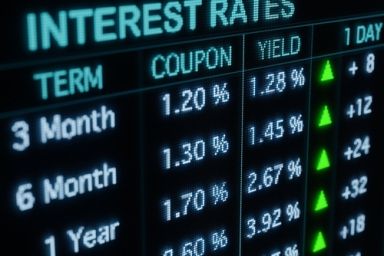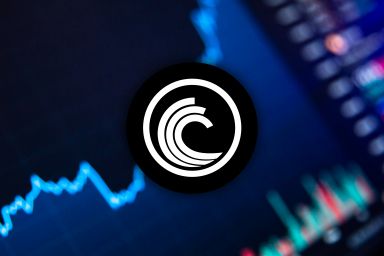Featured articles

Why Michael Burry just sold all his tech stocks
Michael Burry has just exited a nearly $100 million position on Nvidia that he opened earlier this year.
14:42, 9 October 2025

Gold forecast: Third-party price targets
Gold (XAU/USD) is currently trading at $3,982.94 (as of 6:12pm UTC, 7 October 2025), after briefly crossing $4,000 per ounce for the first time during the session.
14:43, 9 October 2025

How does Elon Musk impact cryptocurrency prices?
In cryptocurrency markets, few individuals command as much attention as Elon Musk. The CEO of Tesla and SpaceX’s tweets, Tesla and Dogecoin announcements, and public statements can trigger periods of heightened volatility, with shifts in buying and selling pressure across digital assets.
13:29, 30 September 2025

Gold Mining Stocks: Top Producers, Performance and Industry Outlook
Gold mining stocks provide a way to gain exposure to the precious metals market. For CFD traders, identifying which companies offer strong potential can have a notable impact on performance.
17 hours ago

Market Mondays: Balancing cuts, earnings, and a stronger dollar
Markets digest the impact of last week's volatility after a hawkish cut from the FOMC and tech earnings that didn't quite meet the mark
11:14, 3 November 2025

Alphabet stock forecast: Third-party projections
Alphabet (GOOG) traded at $265.37 at 12:34 pm UTC on 27 October 2025, near the top of its intraday range between $255.00 and $265.76.
08:32, 30 October 2025

Cloudflare stock forecast: Third-party price targets
Cloudflare (NET) was last quoted at $223.69 at 4:52 pm UTC on 27 October 2025, trading near the upper end of its intraday range of $217.11–$224.12.
15:16, 29 October 2025

Market Mondays: Balancing cuts, earnings, and a stronger dollar
Markets digest the impact of last week's volatility after a hawkish cut from the FOMC and tech earnings that didn't quite meet the mark
11:14, 3 November 2025

Markets pull back as Fed eases rate cut hopes and tech faces reality check
Sentiment in US equity markets softens into the weekend as markets digest a busy week of information from the Federal Reserve and key tech earnings
11:46, 31 October 2025

Market Analysis: Gold, Nasdaq 100, GBPUSD
A look into how gold, the Nasdaq 100 and GBPUSD are trading during a busy week of ok key earnings reports and central bank meetings.
09:44, 29 October 2025

Market Mondays: Trade developments, FOMC meeting and Earnings
Markets brace themselves for a busy week ahead with key focus on trade talks, the FOMC meeting and key earnings including MAG7 companies
13:23, 27 October 2025

Gold steadies as safe-haven demand increases
Gold sees renewed safe haven interest as investors become more risk-averse, but several hurdles remain ahead
14 hours ago

Gold Mining Stocks: Top Producers, Performance and Industry Outlook
Gold mining stocks provide a way to gain exposure to the precious metals market. For CFD traders, identifying which companies offer strong potential can have a notable impact on performance.
17 hours ago

Market Mondays: Balancing cuts, earnings, and a stronger dollar
Markets digest the impact of last week's volatility after a hawkish cut from the FOMC and tech earnings that didn't quite meet the mark
11:14, 3 November 2025

Market Analysis: Gold, Nasdaq 100, GBPUSD
A look into how gold, the Nasdaq 100 and GBPUSD are trading during a busy week of ok key earnings reports and central bank meetings.
09:44, 29 October 2025

Market Mondays: Balancing cuts, earnings, and a stronger dollar
Markets digest the impact of last week's volatility after a hawkish cut from the FOMC and tech earnings that didn't quite meet the mark
11:14, 3 November 2025

ECB Preview: no action expected as economy settles
The European Central Bank is expected to leave rates unchanged at their meeting this week as the balance of risks remains in favour of moderate growth and inflation
10:59, 29 October 2025

Market Analysis: Gold, Nasdaq 100, GBPUSD
A look into how gold, the Nasdaq 100 and GBPUSD are trading during a busy week of ok key earnings reports and central bank meetings.
09:44, 29 October 2025

Market Mondays: Trade developments, FOMC meeting and Earnings
Markets brace themselves for a busy week ahead with key focus on trade talks, the FOMC meeting and key earnings including MAG7 companies
13:23, 27 October 2025

Optimism price prediction: Third-party OP projections
Optimism (OP/USD) traded at $0.4075 as of 1:41pm UTC on 30 October 2025, within an intraday range of $0.4074–$0.4526 on the Capital.com quote feed. The token is currently near session lows, extending its weekly decline and staying below the recent period high.
16 hours ago

Dash price prediction: Third-party outlook
Dash (DASH/USD) is quoted at $46.36 as of 11:45am UTC on 30 October 2025, after an intraday move between $45.01 and $49.33. The price shows a modest retracement from last week’s local high amid renewed cryptocurrency market volatility.
16 hours ago

Internet Computer price prediction: Has the ICP price bottomed out?
Internet Computer (ICP) is quoted at $2.8935 as of 2:35pm UTC, trading between an intraday low of $2.8775 and a high of $3.1659. The price is holding just above session lows, retracing after a brief move toward the upper range.
18 hours ago

BitTorrent price prediction: Is the file-sharing coin a buy?
BTT last traded at $0.000000502 as of 10:21am (UTC) on 30 October 2025, slightly below its intraday high of $0.000000503 and above the low of $0.000000477.
18 hours ago
